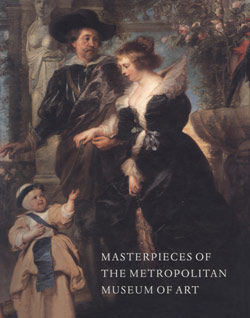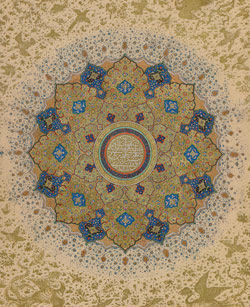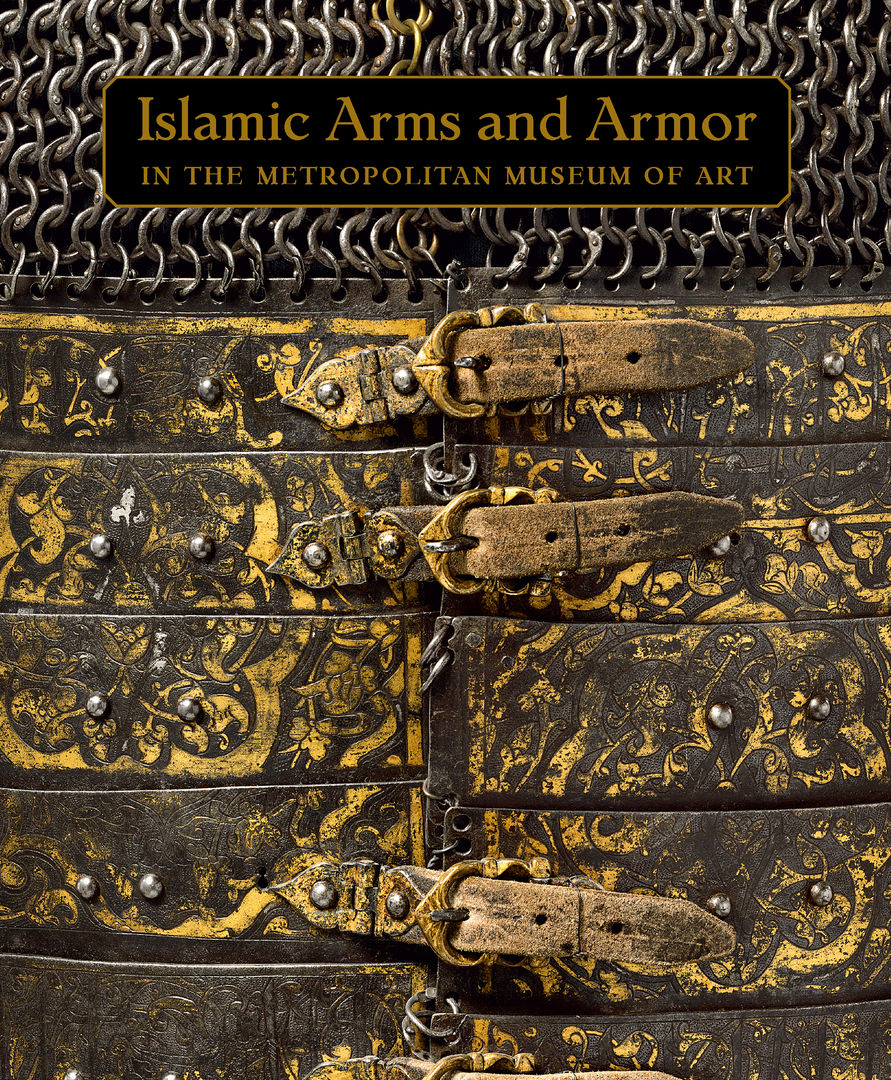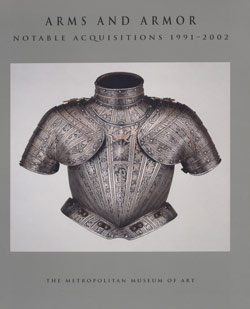Short Sword (Yatagan) from the Court of Süleyman the Magnificent (reigned 1520–66)
Workshop of Ahmed Tekelü possibly Iranian
Exquisite workmanship and lavish use of precious materials distinguish this sword as a princely weapon and exemplifies the opulence and refinement of Ottoman luxury arts. Almost identical to a yatagan (now in the Topkapi Palace, Istanbul) made in 1526–27 by the court jeweler Ahmed Tekel, for the Ottoman sultan Süleyman the Magnificent (r. 1520–66), this sword was undoubtedly made in the same imperial workshop. The gold incrustation on the blade depicts a combat between a dragon and a phoenix against a background of foliate scrolls. These figures, like the gold-inlaid cloud bands and foliate scrolls on the ivory grips, are Chinese in inspiration, and were probably introduced into Ottoman art through contacts with Persia.
This sword is one of the earliest known yatagans, distinctly Turkish weapons characterized by a double-curved blade and a hilt without a guard. Yatagans were commonplace in Turkey and the Balkans in the eighteenth and nineteenth centuries and served as sidearms for the elite troops known as janissaries.
#4415. Yataghan from the court of Suleyman the Magnificent, Part 1
-
4415. Yataghan from the court of Suleyman the Magnificent, Part 1
-
6634. Yataghan from the court of Suleyman the Magnificent, Part 2
-
6635. Yataghan from the court of Suleyman the Magnificent, Part 3
Playlist
Due to rights restrictions, this image cannot be enlarged, viewed at full screen, or downloaded.
This artwork is meant to be viewed from right to left. Scroll left to view more.


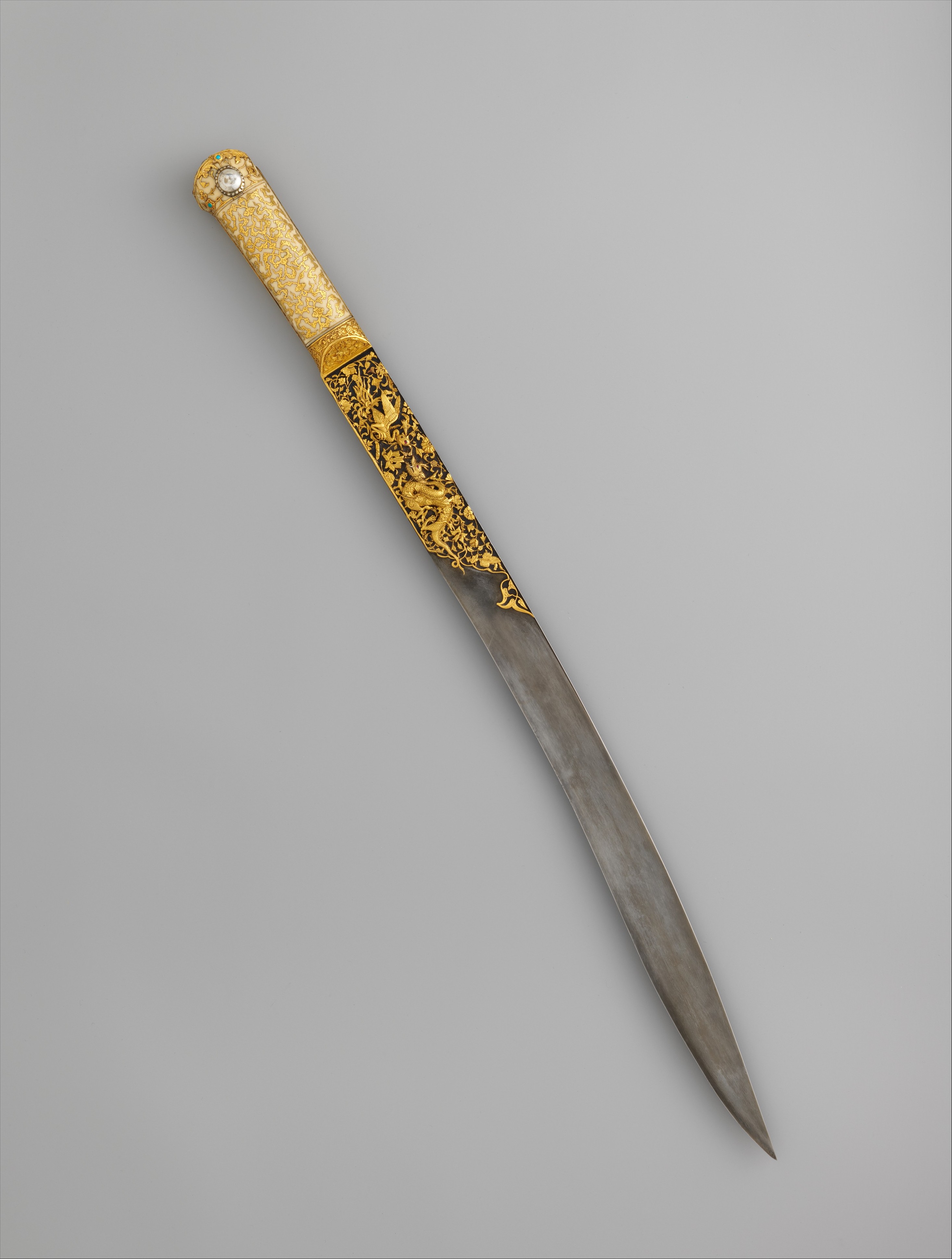
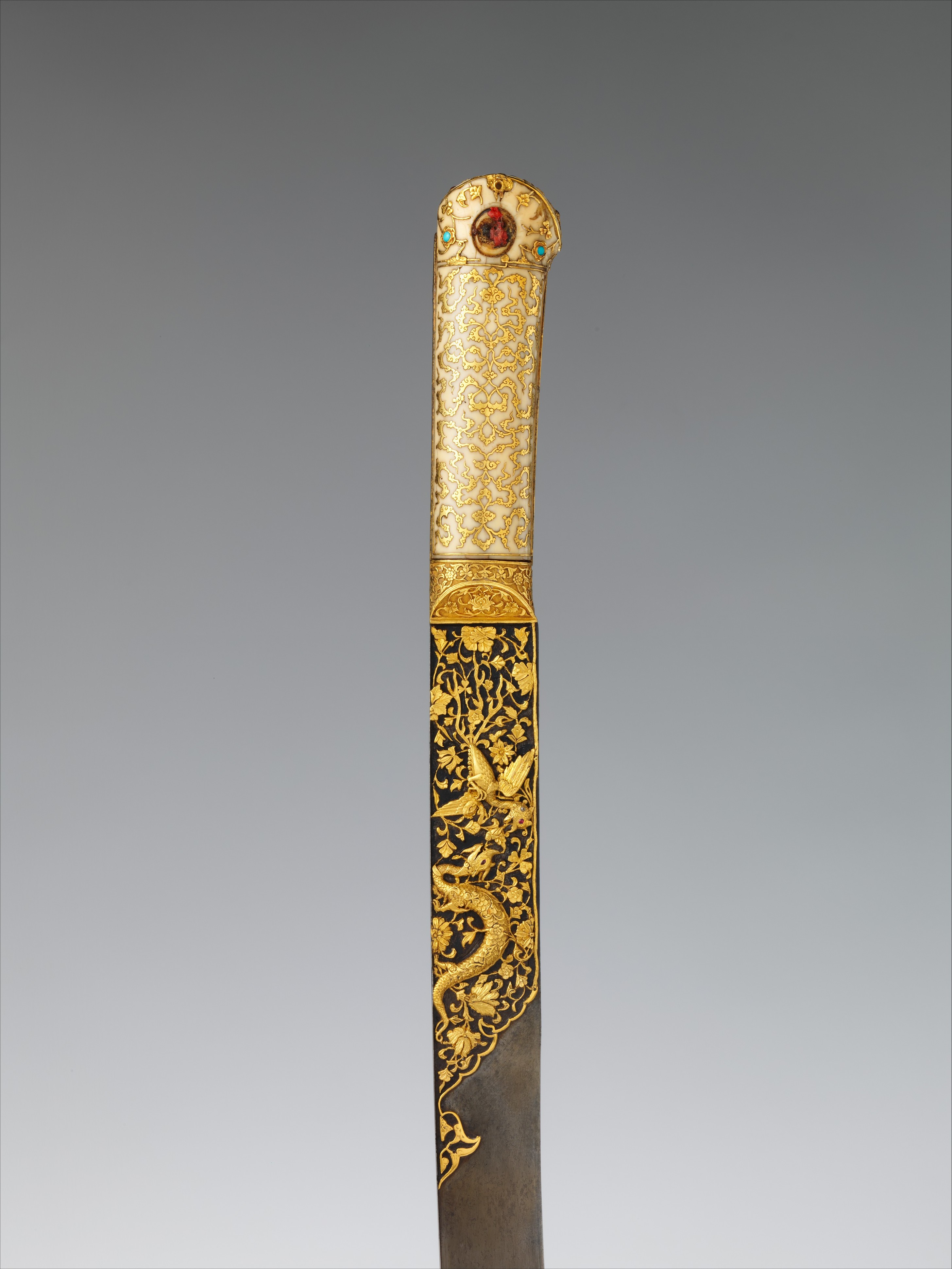
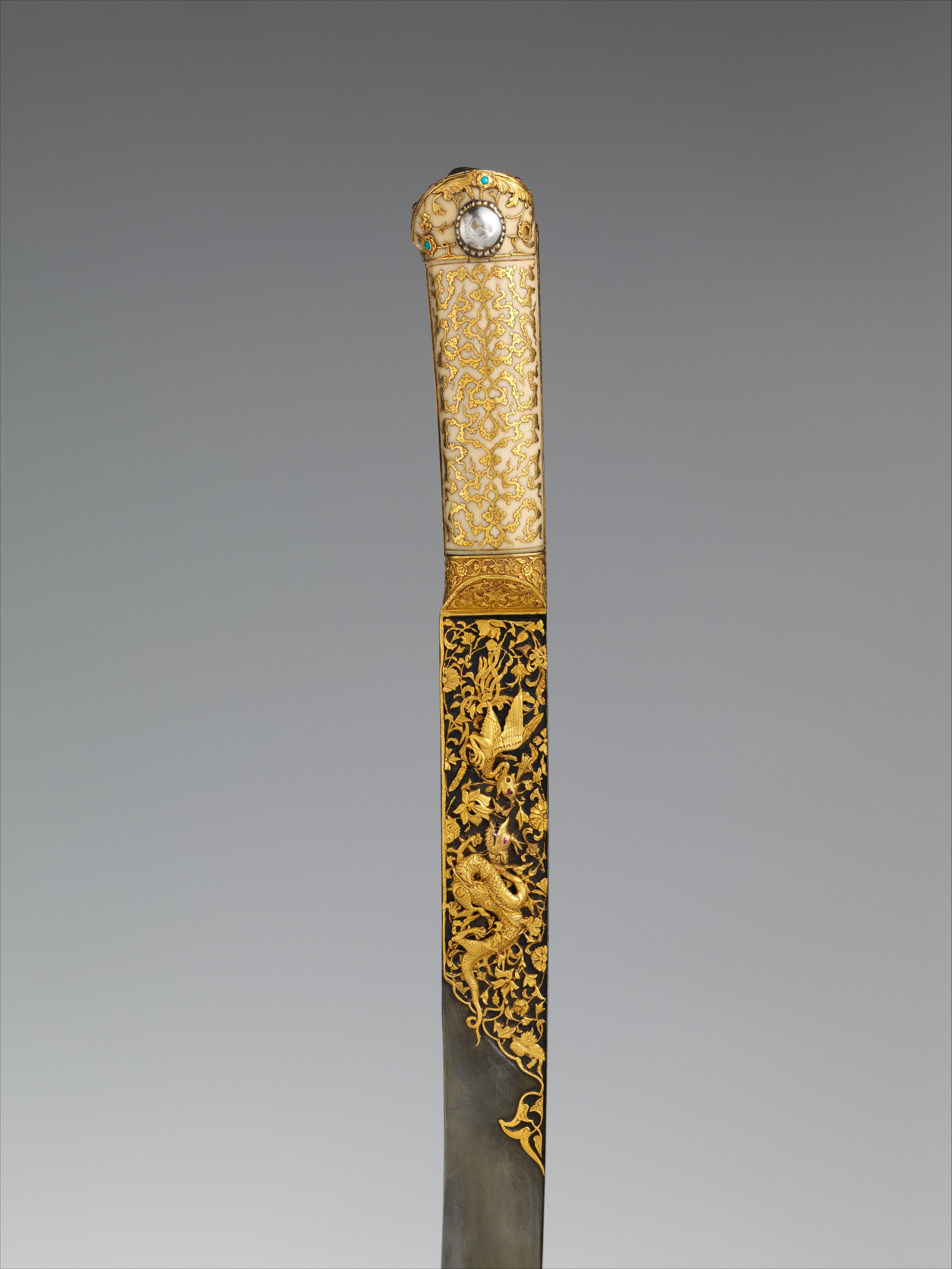


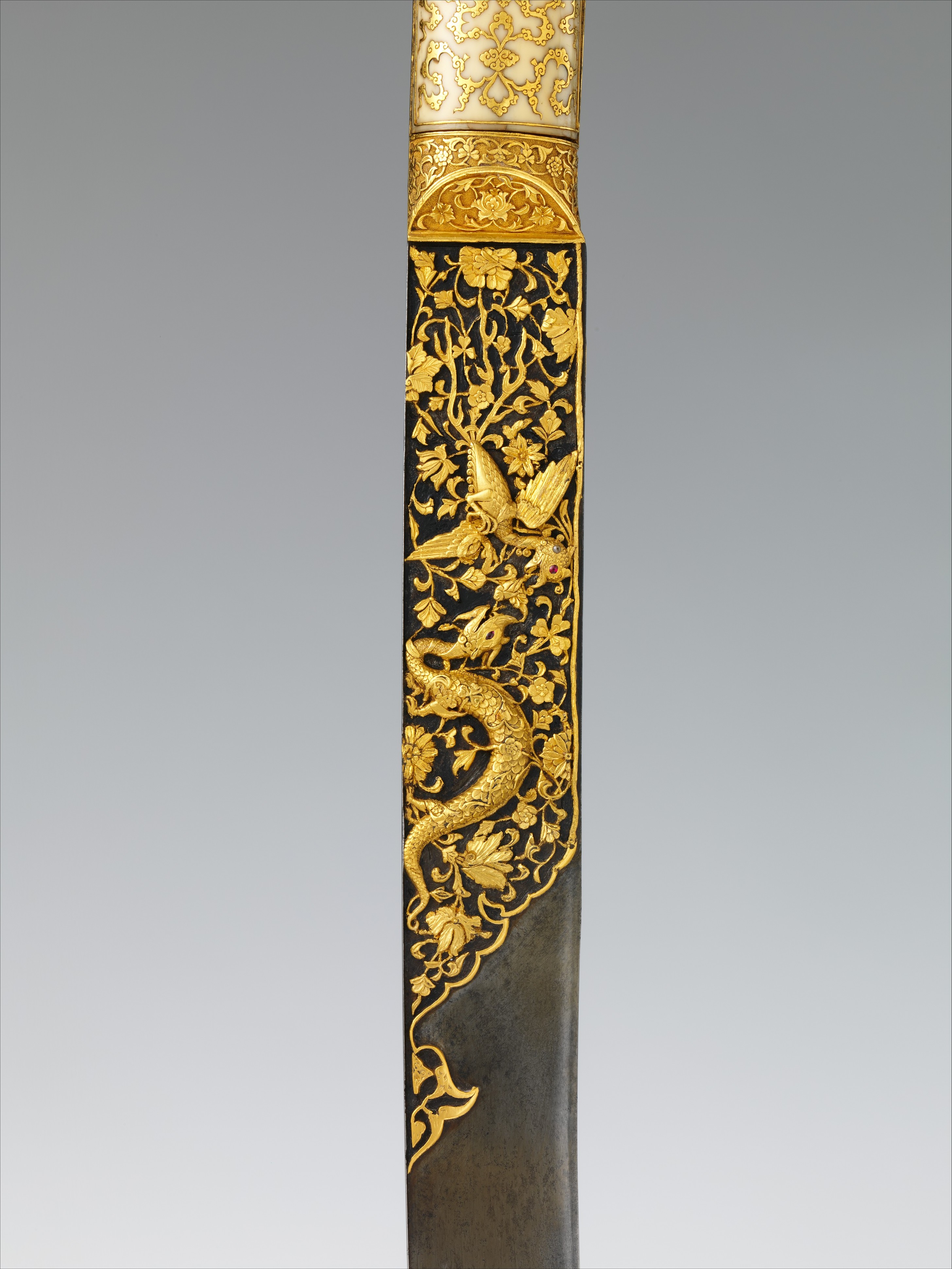

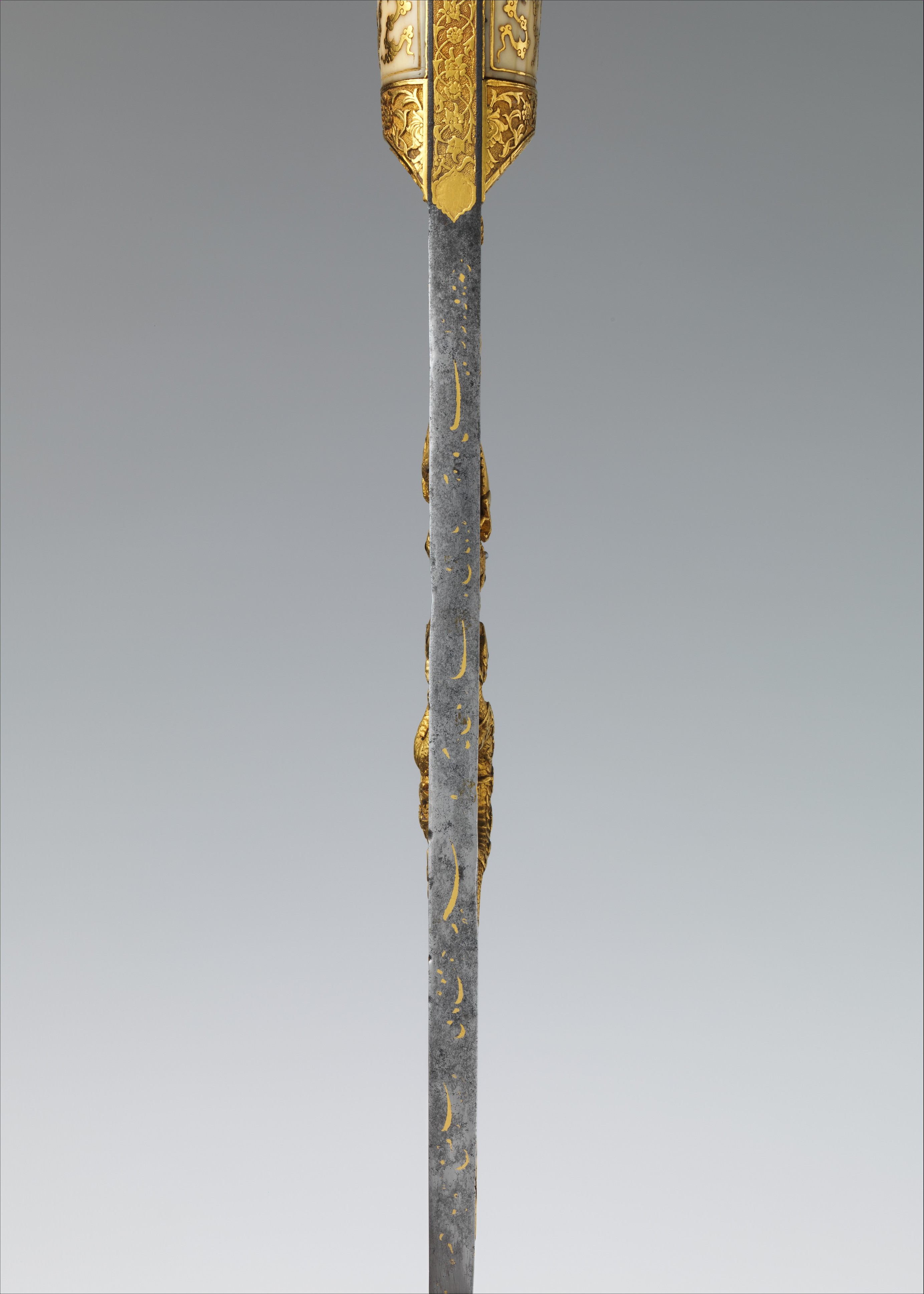
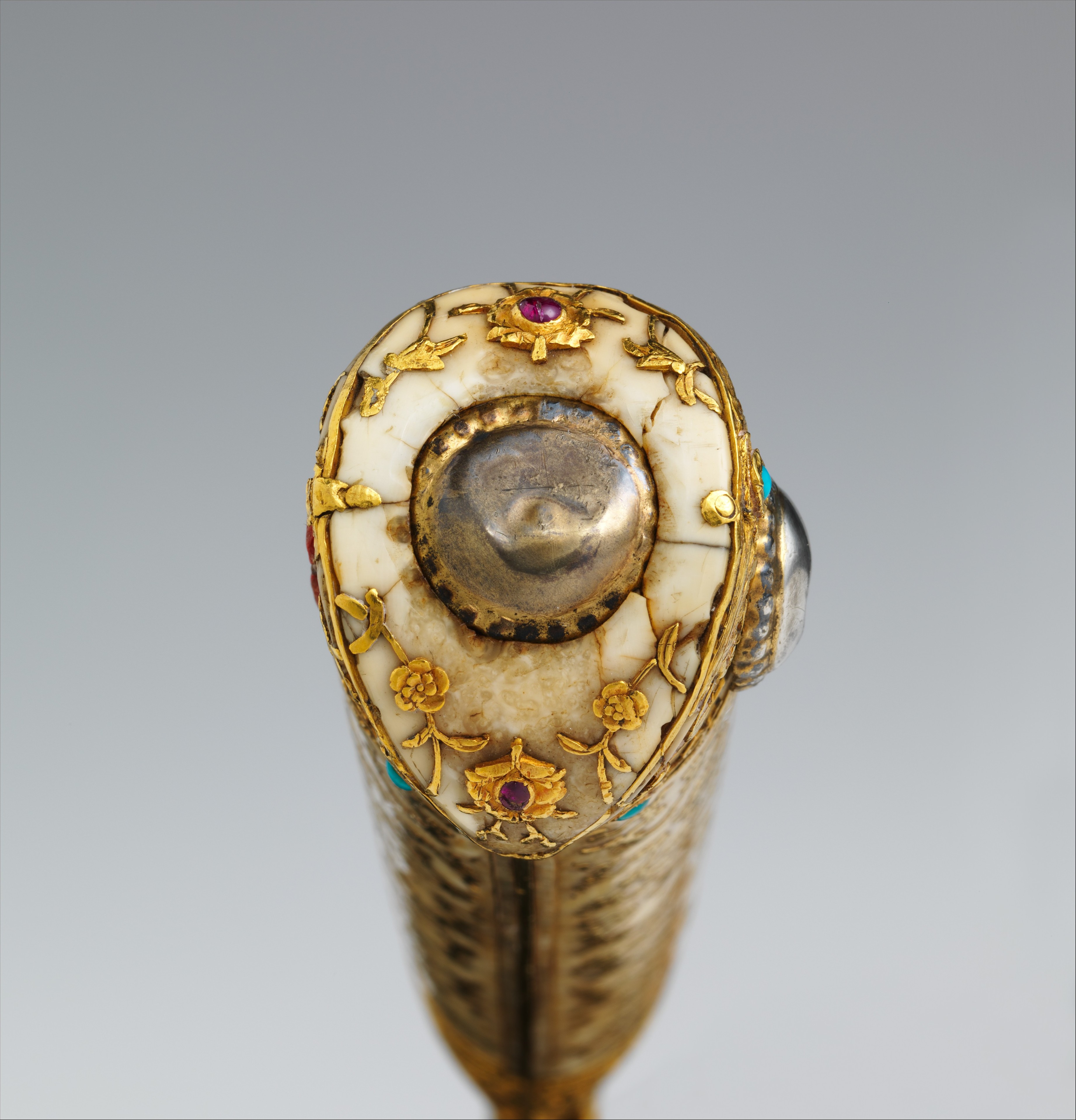


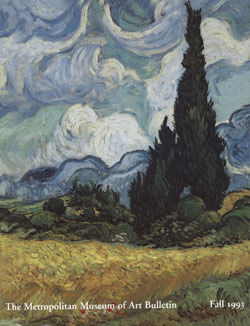
![Of Arms and Men: Arms and Armor at the Metropolitan, 1912–2012 [adapted from The Metropolitan Museum of Art Bulletin, v. 70, no. 1 (Summer, 2012)]](/-/media/images/art/metpublication/cover/2012/of_arms_and_men_arms_and_armor_at_the_metropolitan_1912_2012.jpg)

